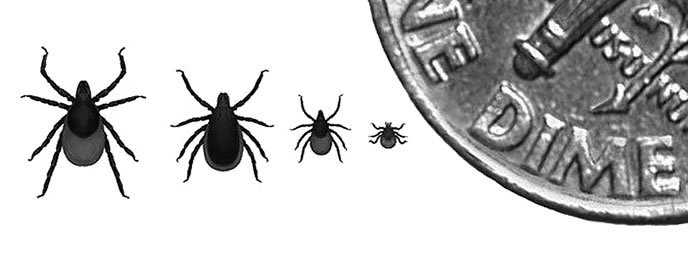
Lyme disease bacteria live in deer ticks that feed on deer, rodents and other hosts. A tick in search of a meal may lurk on a blade of grass or bush. When a promising animal passes by, it grabs hold and hitches a ride. Once aboard, it crawls along, seeking an unobtrusive patch of skin, then latches on with its front legs, cuts open the skin with its mouthparts and inserts a barbed feeding tube that makes removal challenging.
The tick sucks blood and after about two days of attachment, releases Lyme-infected saliva into the host’s blood. When full, the tick pulls out its mouthpart and falls off. Adult deer ticks are active in the fall and lay their eggs outside, which hatch to uninfected larva about the size of a grain of salt the next summer.
A larva tick usually attaches onto a rodent or bird, drinks its host’s blood for a few days, and may pick up the organism from that host. It then falls off, molts and doubles in size to the nymph stage, when it has its second blood meal, on a new host, usually the following spring. It can then infect that new host. Once finished, it will again drop off, molt, become an adult and search once more for a host and mate — all within a two-year life span. The engorged adult can be up to a half-inch long — nearly 3,000 times its original size. Only nymph and adult stages can transmit Lyme disease.



